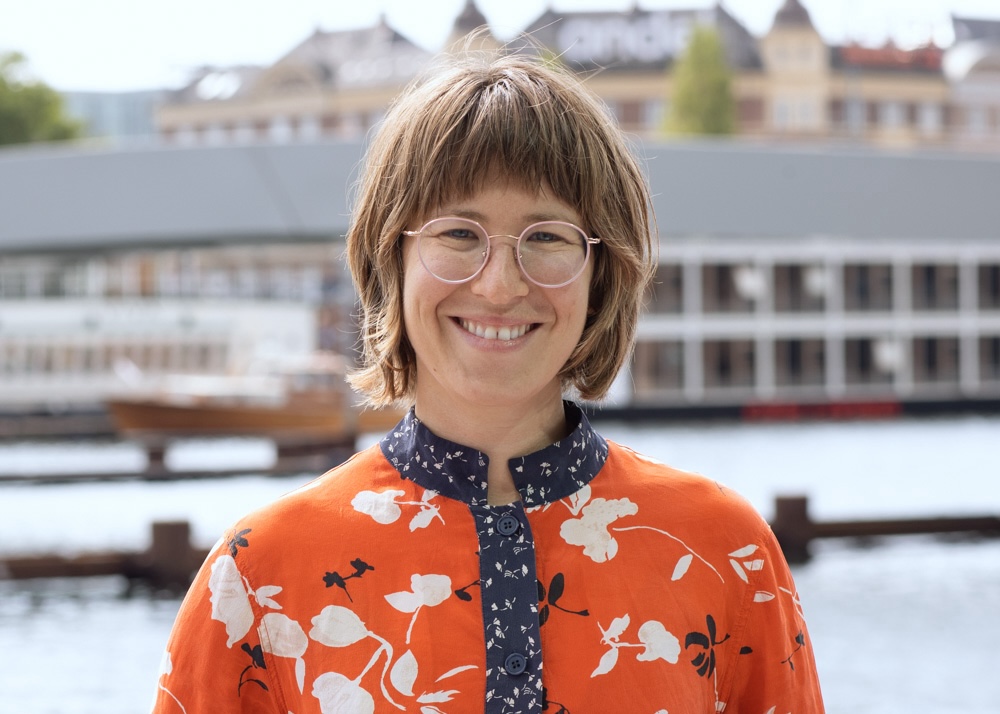
Sophia is a passionate advocate for designing cities that prioritize the well-being of both people and the planet. As a Director at Gehl, an urban design practice on a mission to create more equitable, healthy, and sustainable cities, she leads the Foundation and Philanthropy Team. In this role, she guides her team in shaping change in neighborhoods and communities towards better health. Sophia’s commitment to enhancing the quality of urban spaces stems from her background as an anthropologist and deep understanding of the human experience within the built environment. Her expertise ensures that urban transformation processes result in lasting social and health impacts.
Michal: Let’s start with your story. How did you even begin to think about people, cities, culture, and the connection between those?
Sophia: I’m from California, from a hippie, tiny town. My father was one of the first cohorts in the Peace Corps; he lived in a Mayan Indian village in Guatemala. It had a transformative impact on his life. He raised me with a global outlook despite our small, closed town.
He instilled in me a curiosity about culture and the world. That’s why I went into anthropology, to understand. I went to university in Portland, Oregon. I studied community development and cultural anthropology.
When I was in university, I studied abroad in Copenhagen. I was very interested in architecture and urbanism, and I was interested in the role that urban environments play in people’s culture and experience of the world. Why is it that certain environments shape people’s everyday decisions?
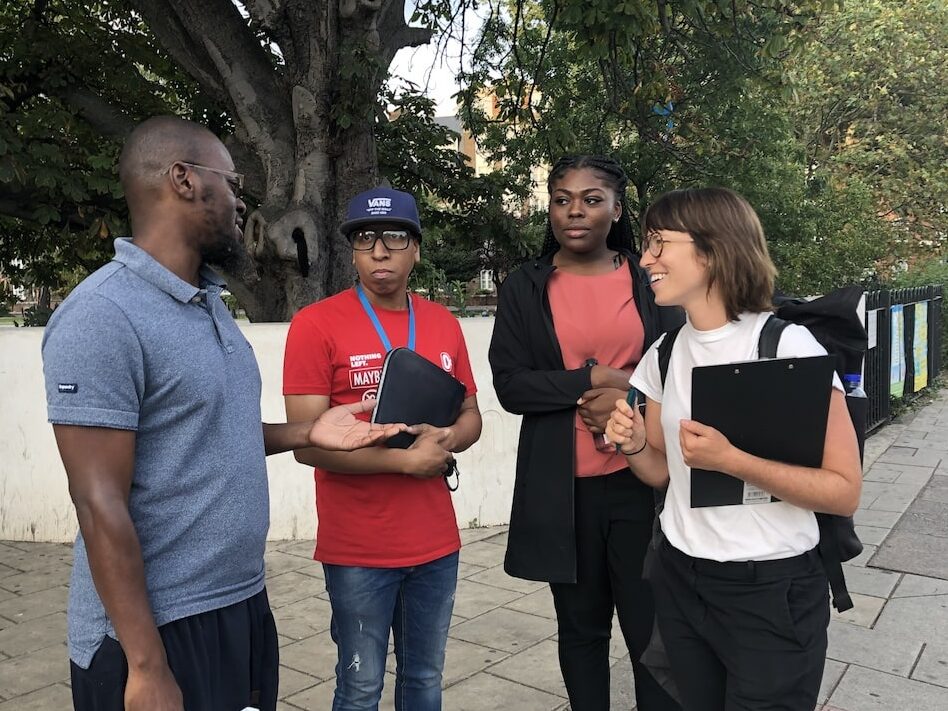
At that time, I had a unique experience with five different professors at my university, all of whom had worked at Gehl. They were infusing the idea of the human dimension in architecture, a concept new to me at that time. That’s what brought me to this industry: the intersection of psychology, the human experience of the built environment, architecture, and the relationship between design and culture.
I studied in Copenhagen for a year, exploring urbanism. I fell in love, as people do, not only with the city but also with a person. I stayed. I thought adding an environmental science perspective to my anthropology would be interesting.
I became interested in the systems shaping our world and influencing our future. I pursued my master’s at Lund University in their environmental science and sustainability science program.
Working at Gehl People
I was always curious about Gehl, especially how they’ve been so successful in creating a narrative of the human scale and the ideal city. How can this concept adapt to different cultures and contexts? That’s where I saw the opening for anthropology in Gehl’s methodology.
For some years, I taught in Copenhagen and started my own urban design collective with friends who were human geographers, sociologists, and landscape architects. We explored promoting health and shifting decision-making through design.
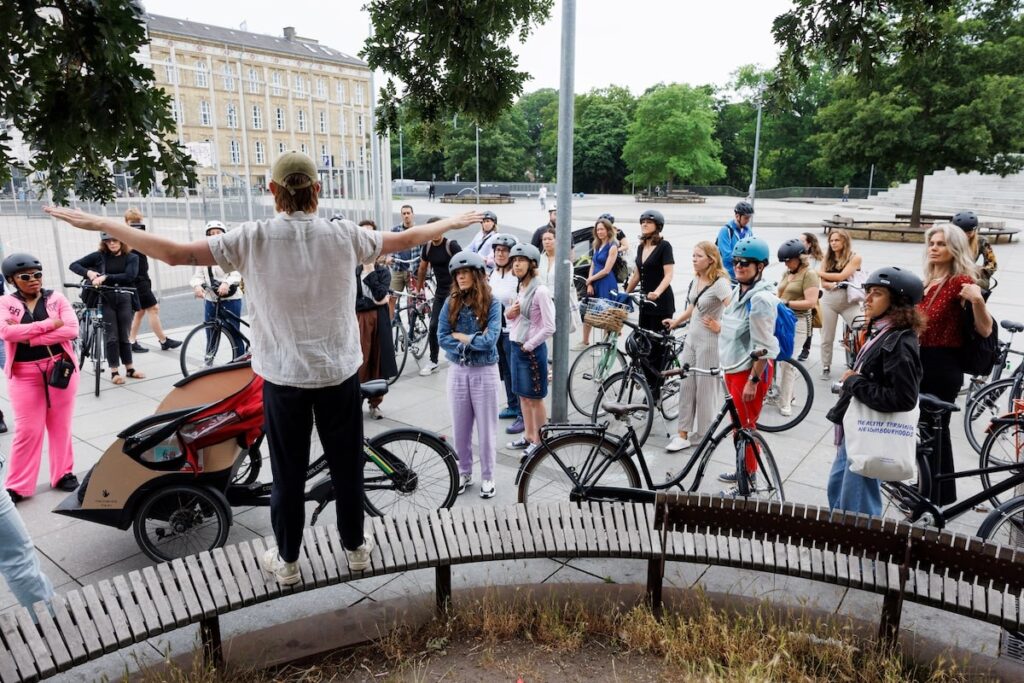
That has been my focus and the driving force of my work, which I brought to Gehl. Now, I’ve been at Gehl for seven years and currently serve as the director of our team, which focuses on helping philanthropic organizations and foundations catalyze investments in cities.
We work to ensure these organizations are able to create scalable impact in cities, especially when cities are often under budgeted for essential projects.
In many cases, cities need catalytic investment and mission-driven support from foundations. That’s the work I’m leading at Gehl, but I’ve been in several of our teams, from our Innovation team to our City Strategy team and now to the Foundation team.
Connecting Data and Stories in Urban Design
Michal: You mentioned Gehl’s ability to create this narrative and sell the story of making cities good for people. As the director working with philanthropic organizations, you’re a key part of convincing people with money that this is an important story to fulfill. What are the key ingredients of this story? Why is it crucial to invest time, money, thoughts, and energy into this?
Sophia: I can start with the how of the storytelling, which is what makes Gehl unique. Our designers and strategists are excellent at storytelling. We intertwine the eye level and the high level when telling stories. Data and evidence are crucial for us. We always start projects by collecting eye-level data that we can layer with big datasets.
Whether tackling challenges like reducing childhood obesity, lowering exposure to air pollution, or increasing access to green space, it always begins with data. Our robust evidence base allows us to tell lived experience and anecdotal stories of unique people’s lives. That’s where the strength of storytelling comes from. Senior decision-makers need data and evidence to build momentum and implement projects. They need quantitative numbers.
Whether tackling challenges like reducing childhood obesity, lowering exposure to air pollution, or increasing access to green space, it always begins with data.
However, that’s not what’s needed for most communities, citizens, resident groups, and the people we work with and aim to support. It’s quite the opposite, the eye-level approach to the everyday. It’s that intersection that makes the “how” possible in terms of storytelling.
Urban crises affect cities, communities, and city governments. Empathetic, eye-level research and an approach to design are required for long-term and sustainable solutions. Many exciting projects often struggle to sustain, therefore we focus intensely on tackling wicked problems by bringing them closer to the eye level and working directly with community groups.
What’s also important is the behavior change component of our work. We aim to target specific behaviors or decisions and adapt them through design. We take intangible theoretical concepts and make them tangible for actual communities.
It’s not always design; sometimes it’s about strategy, a roadmap for foundations to understand how to invest, or creating a framework for measuring success or impact. The deliverables we have vary according to the need or the question.
Mapping Experiences of Communities
Natalia: I’ve read some criticism about how cities were designed in the past. Some people in the field of neuroscience applied to architecture, especially those who are data-driven, say that a lot of design was done for disembodied human observers.
We didn’t have tools or data to understand people, their decision-making, and their interactions with environments. Some academics and practitioners were into observation and tried to understand these complex interactions in the past, but we may have lacked scientific tools and technology to measure things.
I’m curious how far current urban models are dynamic outcomes of data analysis and these complex interactions between people and the biophysical components of cities or how much they are based on top-down theoretical decisions and principles that have been in urbanism for thousands of years.
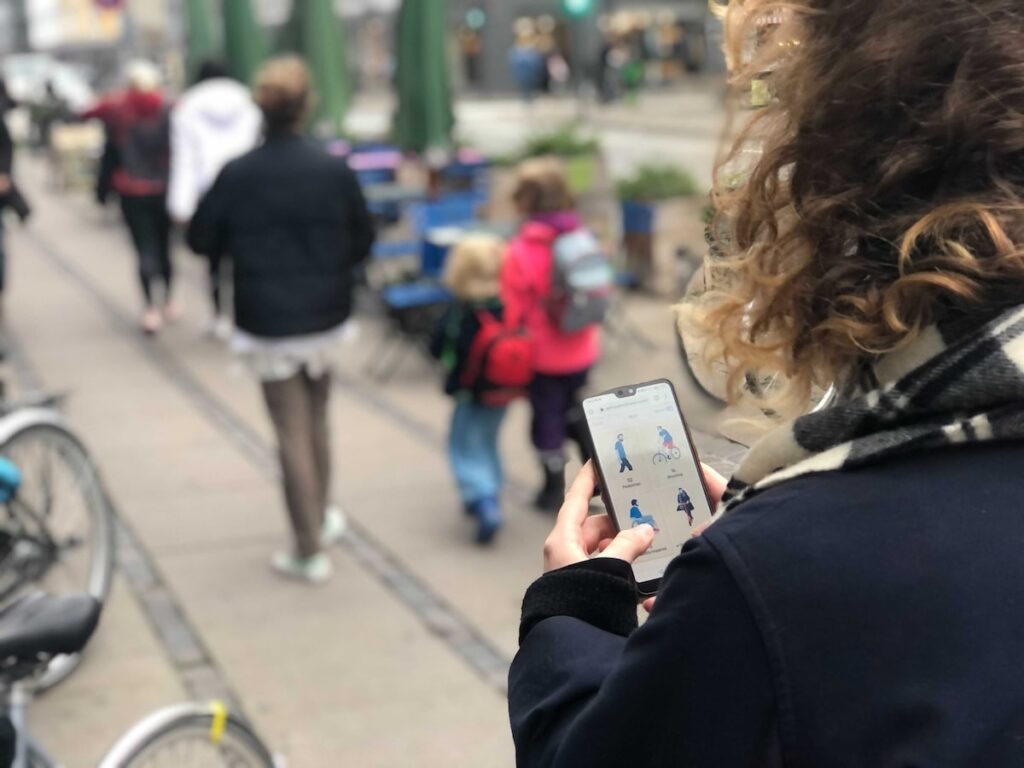
Sophia: Well, where we are depends on who you’re talking to and what work is getting implemented. It’s challenging because our origins were in a disembodied design model. However, what we’re aiming for now is an embodied design model.
While there may be discourse about the architectural industry and what they’re doing at large, I’m more interested in what community-based organizations are doing and how we can support them with our expertise in urbanism and spatial language to get things implemented. For example, let me tell you about a project, as theoretical conversations can get heady, and using a project as a point of view often helps.
Our work in London in 2019 is quite representative of our data-to-design model. We were tasked with understanding the relationship between the built environment and children’s overweight and obesity in a specific London borough. The foundation we worked with wanted to know how they could improve young people’s health outcomes.
Given the complex and competing systems creating those conditions, it’s a difficult question. We can’t fully understand them without a multi-methodological approach. We were able to start finding solutions by taking the eye-level approach, elevating community voices, and making data systems that make communities visible.
What we’re aiming for now is an embodied design model.
For this question, we collaborated with a local organization called Centric Lab, which does place-based community research. They have a fantastic community researcher model for collecting, not extracting, local stories and data. We equipped their researchers with our methodology because we acknowledge that we’re not the local experts. We have an approach to observe and design solutions, but we’re not embedded in the local community to the same extent as Centric practitioners.
So, we empowered their community researchers to conduct the research in vulnerable communities, primarily black and brown, with various socioeconomic gaps and challenges like access to transportation. Local people from those neighborhoods conducted the study, following and building upon our methodology, which was not extractive but a form of capacity-building. Knowledge is captured, shared, and maintained within the community.
Then, we worked with local organizations and young people involved in the project to collectively analyze the data, ensuring the data stays local and involves the youth.This is a different model for architecture, keeping knowledge local and letting them inform us, creating solutions based on those data insights.
For example, one data insight from that project was that young people primarily ate fast food next to bus stops, despite a policy in London to reduce youth obesity and overweight which prevents fast food places within a 400-meter radius of schools. This insight from local youth helped us to better understand gaps in the existing policy based on their actual habits.
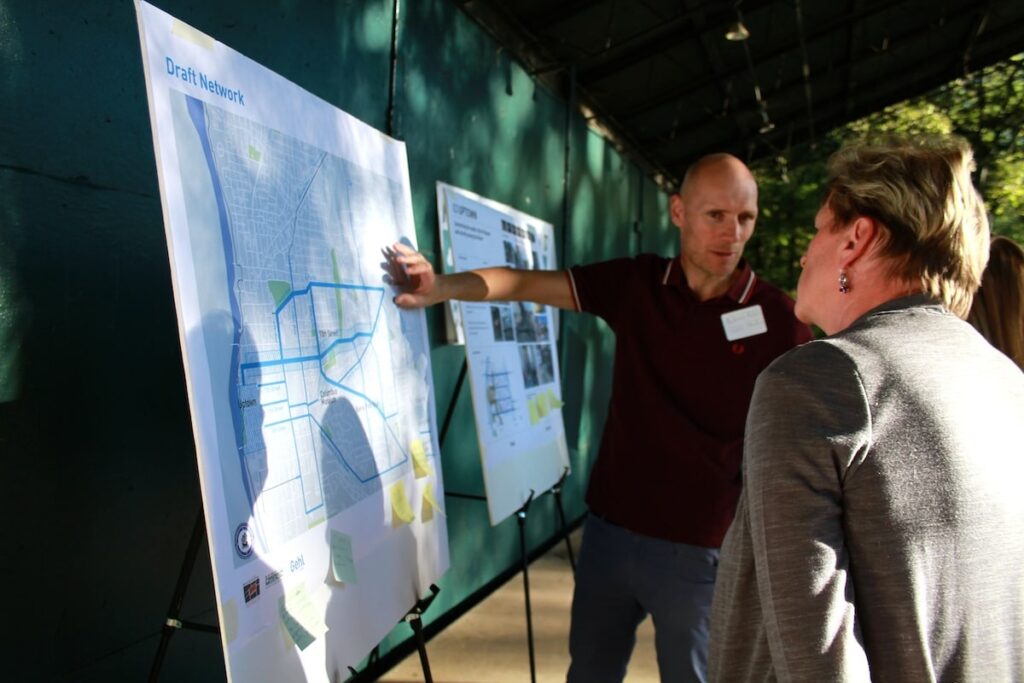
We asked young people to do lived experience mapping and record behavioral patterns of places they eat, where they spend time and their transportation routes. We found that fast-food places spent four times the market rate for retail locations next to transportation stops. We also found a correlation between the rise of fast-food places on the high street and the decline of civic amenities for young people due to austerity measures.
They need safe, cool places to hang out. This is a transit, public health policy, and retail issue. We start to see how to address these challenges by introducing civic hubs for youth, redesigning bus stops or limiting fast food at transit stops.
No decisions are made in isolation; it’s all part of a system that needs redesigning. Architects and urbanists are well suited to help cities create long-term solutions, and to help them shift from policy written behind the desk to on-the-ground observation to ensure impactful and sustainable urban transformation. We often host masterclasses and study tours to help city makers make that change in mindset.
Capacity Building in Urban Design
Michal: The whole topic of privatization of public spaces is interesting. I also like what you said about capacity building. Building capacity in communities is essential. The architect’s role should be to empower communities, not impose something on them. We interviewed Upali Nanda from HKS, and she said that if architects at least spent some time observing the site they are supposed to design, even that would be a game changer.
So, for architecture students or architects looking to grow and use tools like anthropology or methods like observation, why should they use them, and where should they start, especially if they don’t have access to knowledge like that in their architecture course at the university?
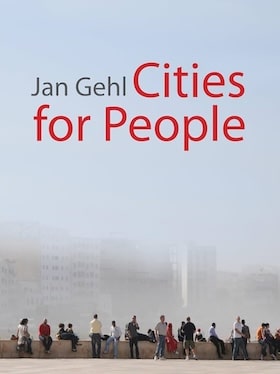
Sophia: You know where to start. There are like five Gehl books out there (laughter).
Capacity-building goes both ways. We learned that many of our city makers and city planners require quite a bit of capacity-building to understand how to work with communities, not to be extractive but to elevate and make visible the invisible voices.
That links to your question about why observation. Data is difficult. If you ask a traffic engineer to design a street based on traffic modeling, you won’t necessarily get a street that functions for people. Robust observational methodologies can create data sets that inform us about the human experience, and also the non-human experience, in a given place.
Observation makes the invisible visible for decision-making and planning processes and allows people to count with their feet. Through observation, you can see where they go, what they’re doing, who’s there, and who’s invisible. It’s about capturing countless micro-stories to paint a complex highly detailed macro picture.
One example is our project in the Civic Center in San Francisco, a disused, challenging location with homelessness and mental health challenges. We were asked to do a public realm analysis because there was a perception that this population threatened those visiting the area.
After an intensive public life analysis, we found that there were a tremendous number of people visiting Civic Center with up to 4,000 people visiting per hour at evening rush hour. Around 12% of people staying at Civic Center fell into the category of sleeping and encamped.
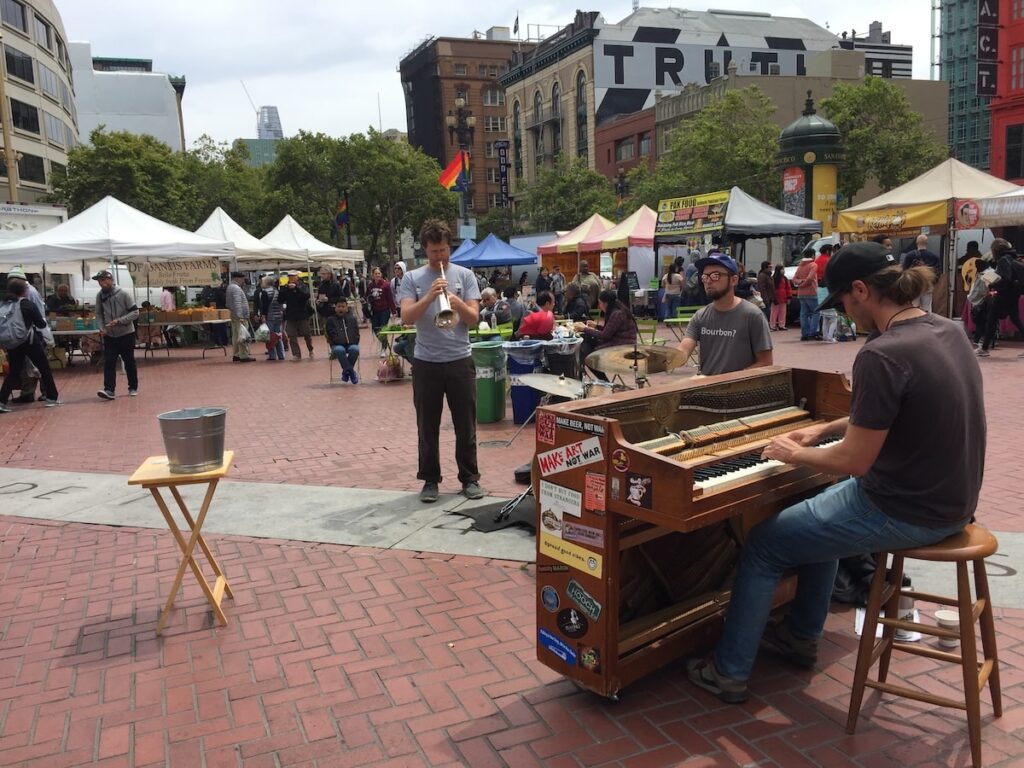
Very few incidents were reported as violent or aggressive, but nevertheless perceptions persisted. Based on the data we collected, we could have an open dialogue with the police about the perception versus the lived experience of that place and bring a new layer into the conversation.
It’s about telling a different, more accurate, nuanced story of what’s happening in a place. For students and young people interested in architecture and urbanism, some methods like counting and public life studies are easy to start with.
Another tool is Photo Voice, a methodology that allows specific invited people to document their experiences through photographs and annotations. We’ve digitized it into an app called the Eye Level City app.
Sophia: It’s a tool that allows you to create prompts. Let’s say you have a cohort of citizens from a specific neighborhood, and you want to learn about their mobility experiences over a month. They sign up to do the task, and the app distributes daily prompts for them to document throughout the day. It also geolocates their routes.

They opt in as surveyors, giving us a geotagged map of their movements and photographs of specific experiences. They annotate their photos and can anonymously vote on others’ pictures if they share similar feelings.
For example, in a project in Copenhagen, we used this app to track what creates a sense of belonging versus stigma in the urban environment for different minority groups. One person documented a bike lane with a sign inviting wheelchair users to share it. However, this person found it stigmatizing and dehumanizing to be separated from their walking group.
These tools allow people to share their everyday experiences and inform better and more inclusive design. Many hands-on lived experience methodologies and online resources are available, such as Gehl’s Public Life and Public Space tools.
Mental Health and Urban Environment
Natalia: I had a conversation with a collaborator of mine. She’s an architect researching a PhD in environmental neuroscience at Max Planck. Recently, she worked on an editorial for a scientific journal related to cities and mental health. Based on what you’ve said so far, I’m curious if you believe in frameworks for cities that could address mental health issues. Are there universal solutions, or is it more context-specific? What’s your outlook on that?
Sophia: It’s a good question. There are universal frameworks that can serve as starting points. Making solutions that are context-specific yet scalable is pivotal to achieving progress. The US Surgeon General has recently addressed loneliness as an epidemic and provided resources that demonstrate how frameworks can be used to tackle mental health challenges and loneliness.
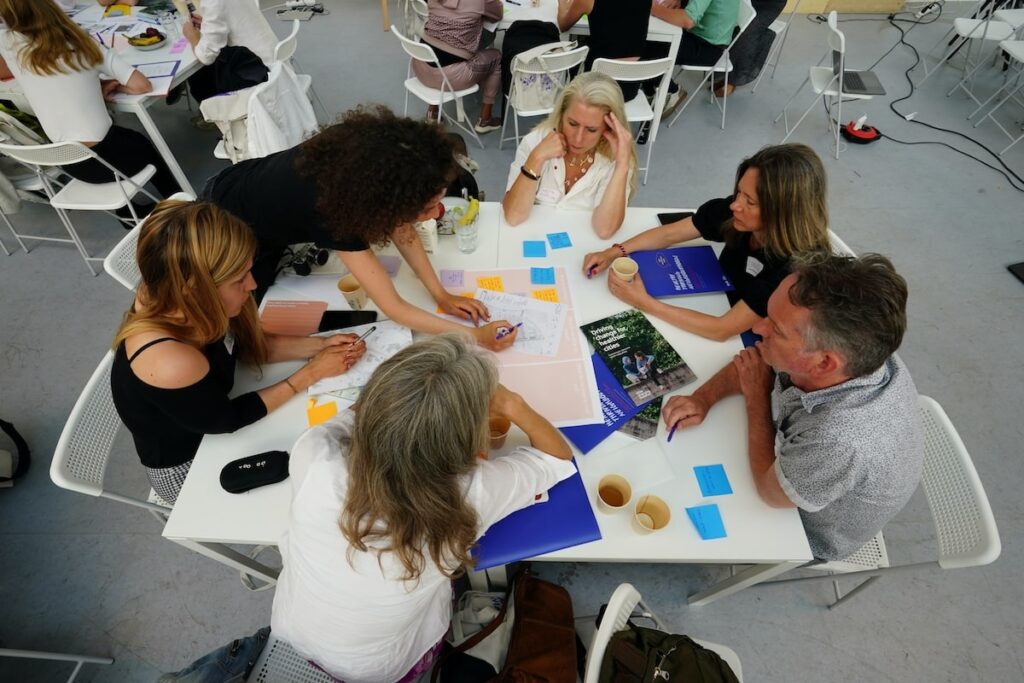
The six pillars of their latest report range from strengthening social infrastructure in communities to building a culture of connection. We are more connected than ever, yet also more disconnected than ever. Some fantastic resources have been made available from various public offices.
I’m especially interested in working with public health departments, to define public health crises that cross many communities and create core recommendations from a planning perspective. This applies not only to mental health but also to physical or cognitive health challenges.
The built environment can be a platform for cognitive, social, emotional, and physical health.
For example, we often work on early childhood development, focusing on the early years, zero to five years old. The built environment can be a platform for cognitive, social, emotional, and physical health. Some design principles are universal, like the positive impact of interaction between small children and their parents on their ability to concentrate and build deep social connections.
It’s about architects, urbanists, planners, and designers understanding and implementing these universal research findings in their work. Research often remains disconnected from practice, and our job is to bridge that gap.
Once projects are implemented, we need the room and mandate to evaluate their impact on health, behavior, and more, allowing for refinement. Long-term solutions and success evaluation are essential. We can have a framework and scale it context-specifically.
The Soft City
Michal: On the practical side, I wanted to mention the soft city approach, which is one of my favorite books on cities. I see it as the philosophy on which your organization is based. How does this approach connect to what we’ve been discussing?
Sophia: At its core, Soft City is about creating everyday ease and comfort, making what feels hard an invitation for ease. It’s about elevating the human dimension and putting it at the core of design. My work revolves around developing methodologies to make people visible, and working with foundations, NGOs, and philanthropic organizations to further their impact.
The Soft City shows up in how we build relationships, nurture them, and create everyday moments for life to thrive, and enabling organizations to achieve their goals. So, that’s how it shows up for me.
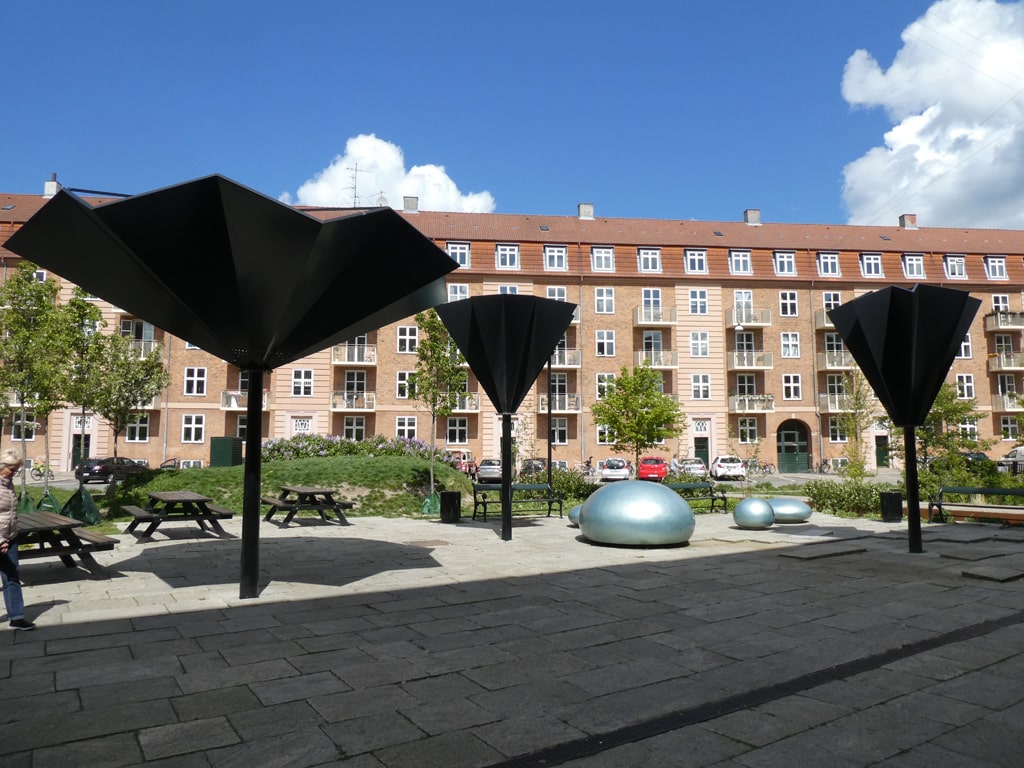
Many principles of the Soft City, such as densification, proximity, and a networked approach to urbanism, are deeply relevant across various cities worldwide. While some argue that these concepts are too Copenhagen-centric, our work in cities like Tel Aviv, Bogota, London, and San Francisco has shown that these values are applicable universally.
Michal: In one of your blog posts, you mentioned events with different discussion groups, including one about creating non-demographic metrics for the future of cities. What common metrics or goals could architects, municipalities, and policymakers adopt?
Sophia: Alongside mental health, metrics for success can include feelings of belonging, inclusion, and access to basic needs. We need to define those basic needs, as not everyone has access to them, even in highly developed communities.
Another critical dimension to consider is the more-than-human aspect. We should explore how to design for and with non-human species, like plants, mycelia, and soil networks. We must be open to partnerships beyond our species and embrace multi-species design approaches. While the human dimension progresses, we must focus more on this multi-species question.
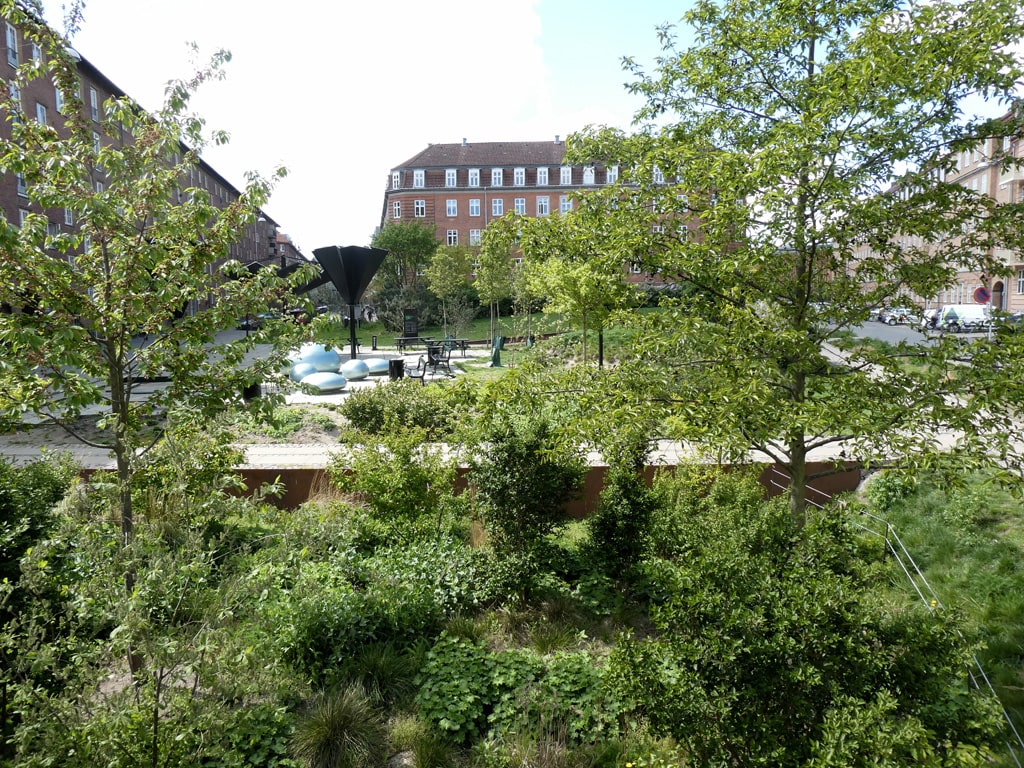
Michal: It’s an interesting perspective. The private sector also plays a significant role in shaping cities, especially in the US. How can the private sector adopt similar criteria for success in their developments, workplaces, and investments in public spaces?
Sophia: The private sector plays a fundamental role in shaping cities, providing workplaces, financing transit, and investing in public spaces. They must use a higher value system for measuring success in their development process. While there has been progress through corporate social responsibility (CSR) divisions, there is still room for improvement, especially regarding regulatory requirements and ESG frameworks, where the social aspect is often lacking.
Sophia: We must focus more on what the “S” stands for in ESG and define the metrics according to qualitative factors.
Natalia: Environmental impact has received much more attention in recent decades compared to the social aspect of ESG, which is still underdeveloped.
Sophia: Measuring impact, even in subjective areas like belonging, is challenging. We are all grappling with the lack of globally defined metrics.
Smart Cities
Natalia: Moving on to smart cities, what are your thoughts on technology embedded in urban environments and the implications of surveillance capitalism?
Sophia: The technology embedded in smart cities is here to stay, but it raises important questions. An ecofeminist approach defined by involving communities in shaping these technologies could be valuable. For example, AI can be a fantastic tool for urban design, but its development often lacks diversity and community representation. Communities should be brought to the table to influence the shape of these technologies.
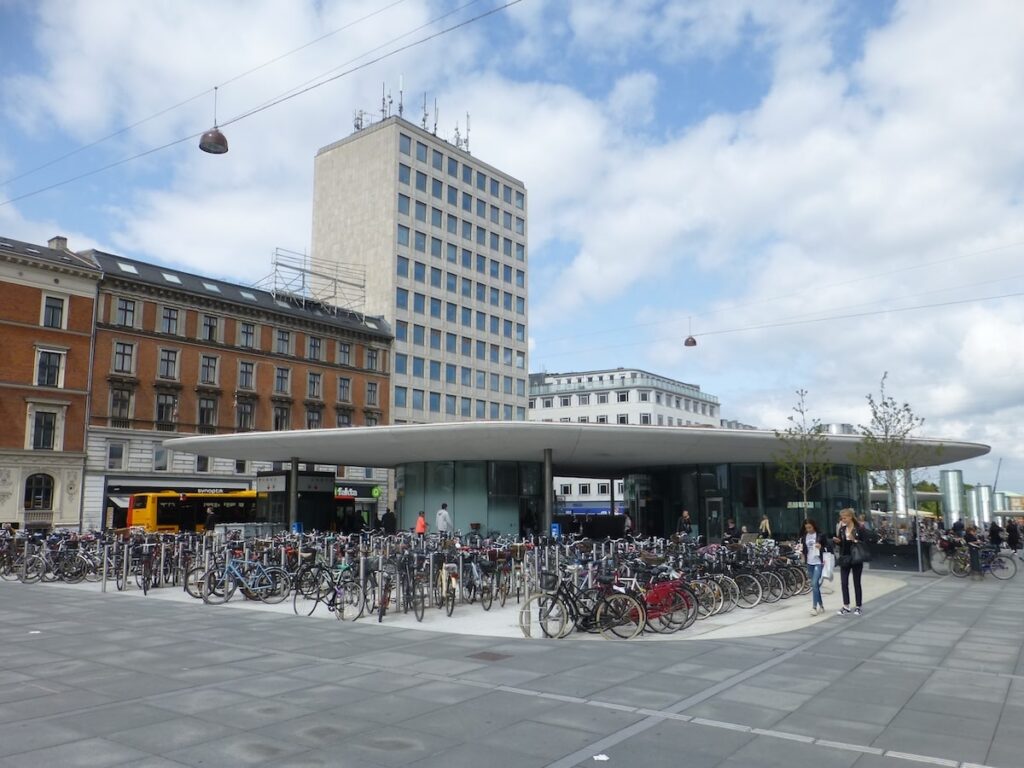
Michal: Your idea about communities shaping how smart technologies are used within their community is intriguing and rarely discussed. What would a smart city look like if its community and users designed it? It’s a fascinating concept worth exploring.
Can you highlight a specific place or space that you believe has been designed based on these criteria and methods, serving as a good example for others?
Sophia: I would recommend the Climate Quarter in Copenhagen as a wonderful example. Also, the award-winning Nørreport station in Copenhagen was designed with a robust methodology, tracking people’s desire lines and safety considerations. These two are excellent examples. Additionally, our public realm projects in Shanghai have utilized evidence-based, data-driven approaches for before-and-after design and impact evaluation, making them great examples as well.
Subscribe to Venetian Letter
You will receive our regular newsletter with blog posts, interviews, books and events on human-focused architecture and urban design.